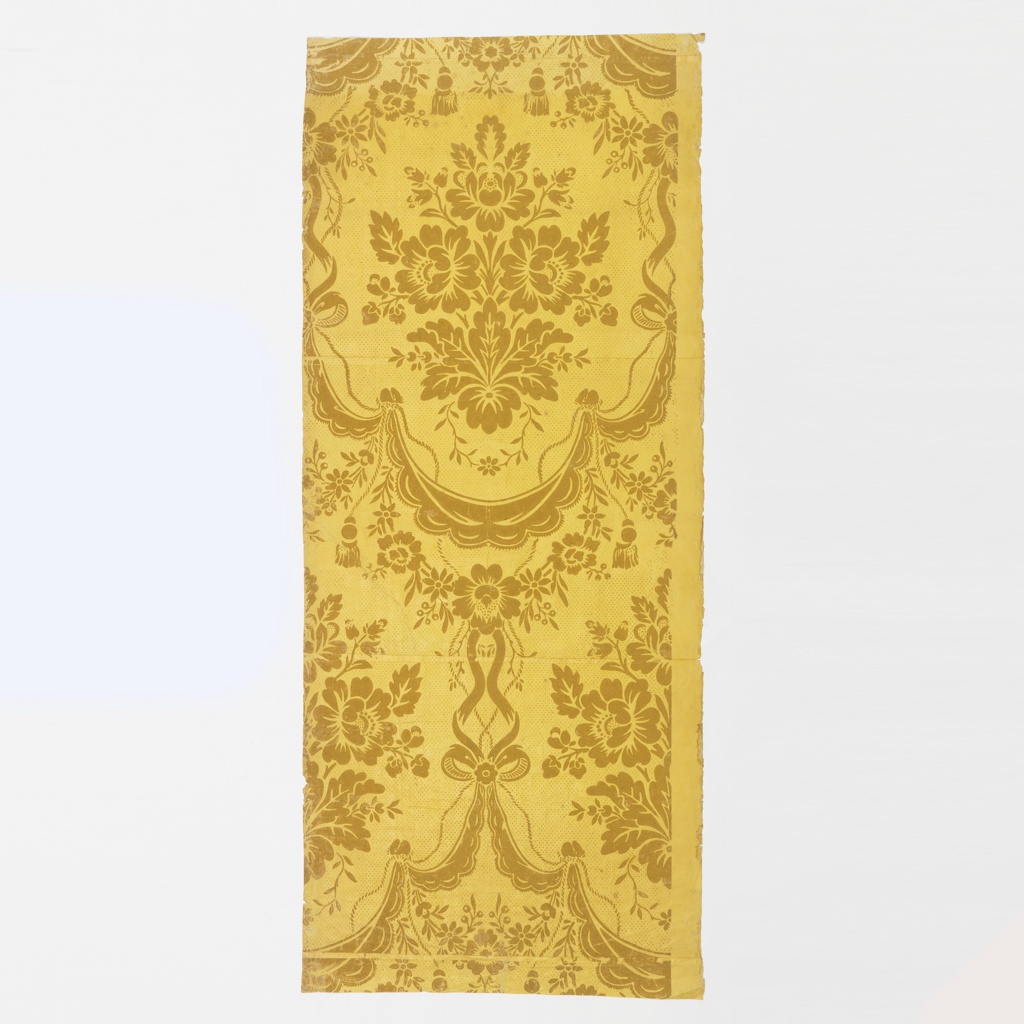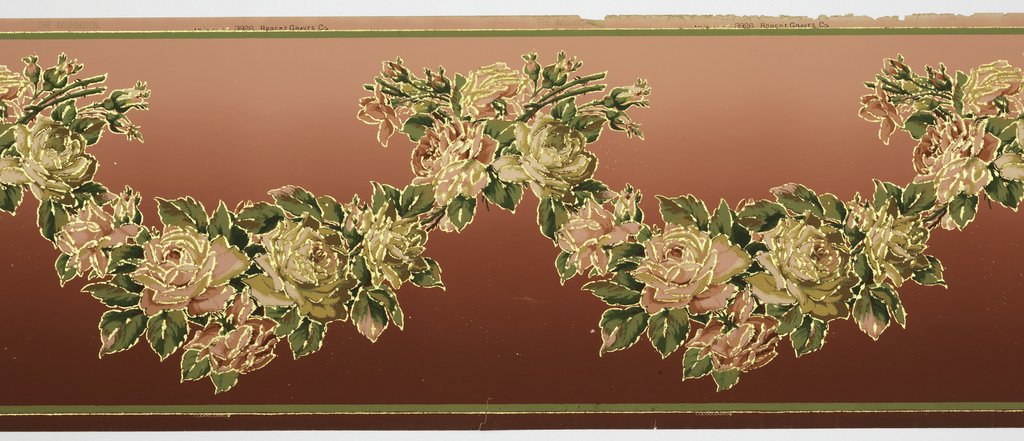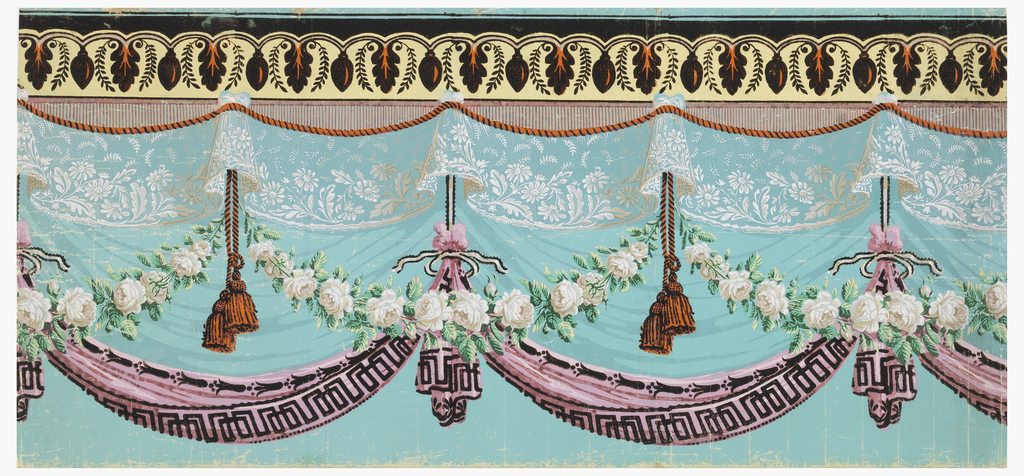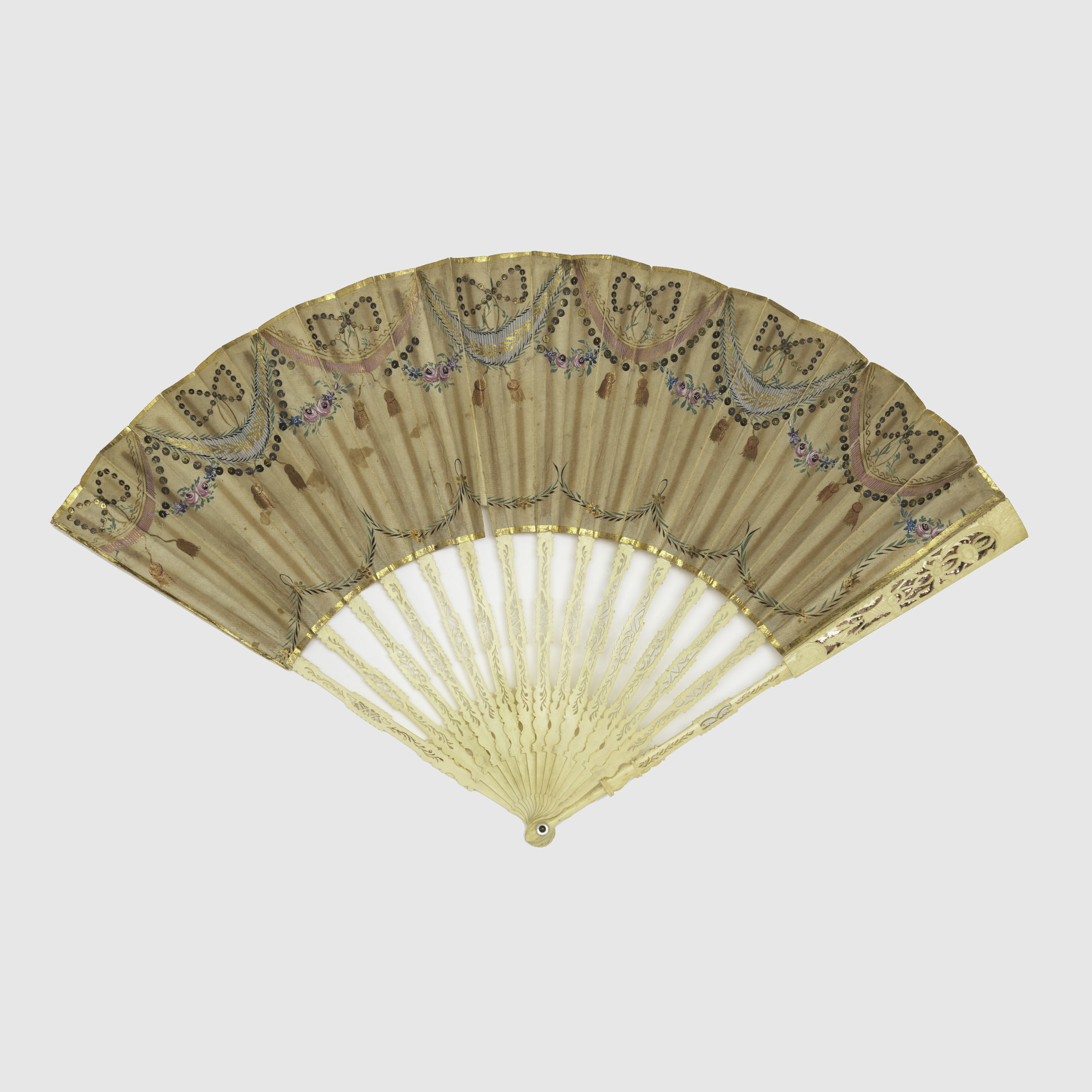During the 17th century, France and England, both major producers and exporters of wallpapers, were printing inexpensive decorative patterns on single sheets of paper. These were multi-use papers and were used for lining trunks and chests, as well as decorating walls. Outlines were printed by crude wood blocks and color was added by applying thin...
Robert Graves Co. was founded by a Brooklyn-based Irish immigrant, and was one of the most successful wallpaper manufacturies in the United States from the 1860s to the 1920s. This wallpaper frieze was made by the company c. 1905-1915, and would likely have been marketed with a coordinating sidewall and ceiling paper. It features a...
Traditionally, wallpapers have imitated more expensive materials, such as architectural details, painted wall decorations, wood grains, marble, and, most often, textiles. In the mid-18th century when wallpapered rooms became a prevailing fashion in England and France, wallpaper borders were as important a decorative element as the coverings themselves. A brilliant swag of printed paper flowers,...
This finely painted paper fan exemplifies the simpler styles of the Directoire period and the effects of the French Revolution in 1789. The period 1789-1800 is characterized by a radical change in fashion: the excesses of the pre-revolutionary period were rejected for simpler designs and humbler materials. Earlier 18th century fans were elaborate in design...



